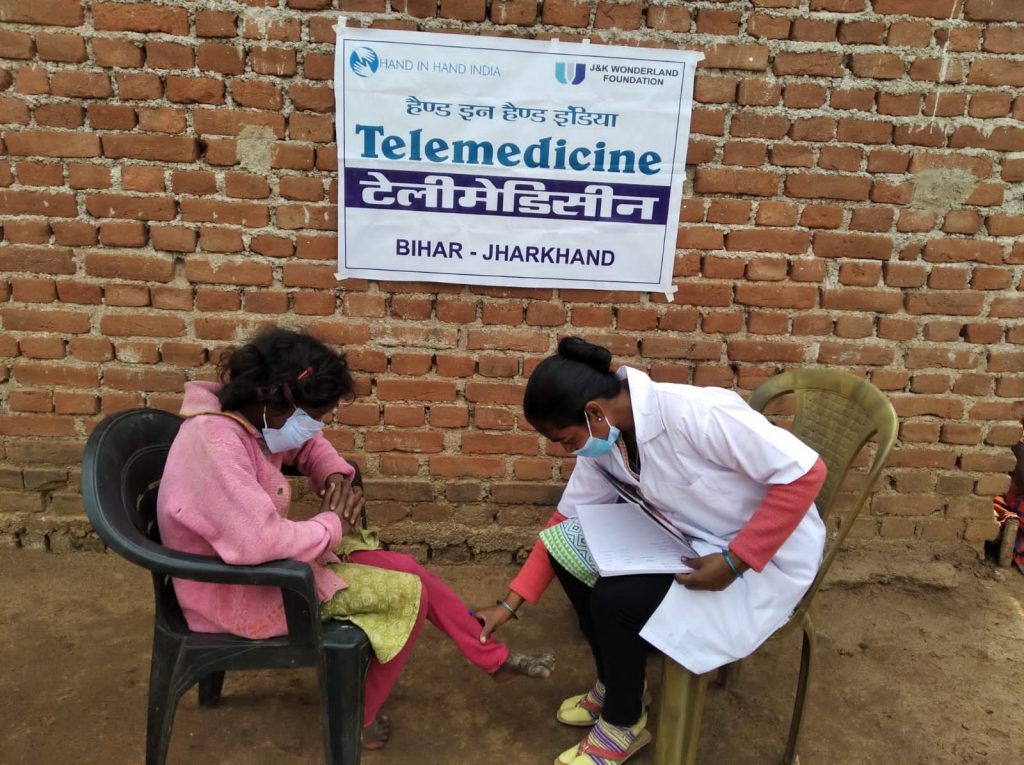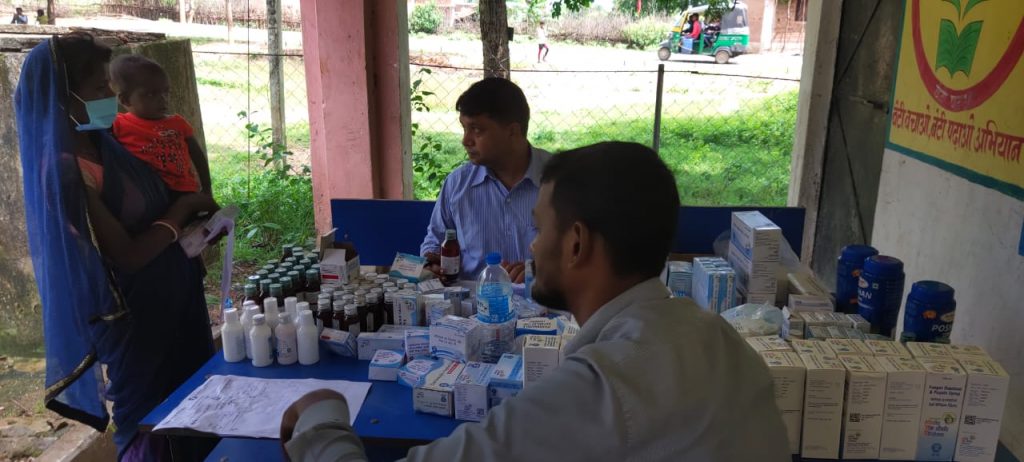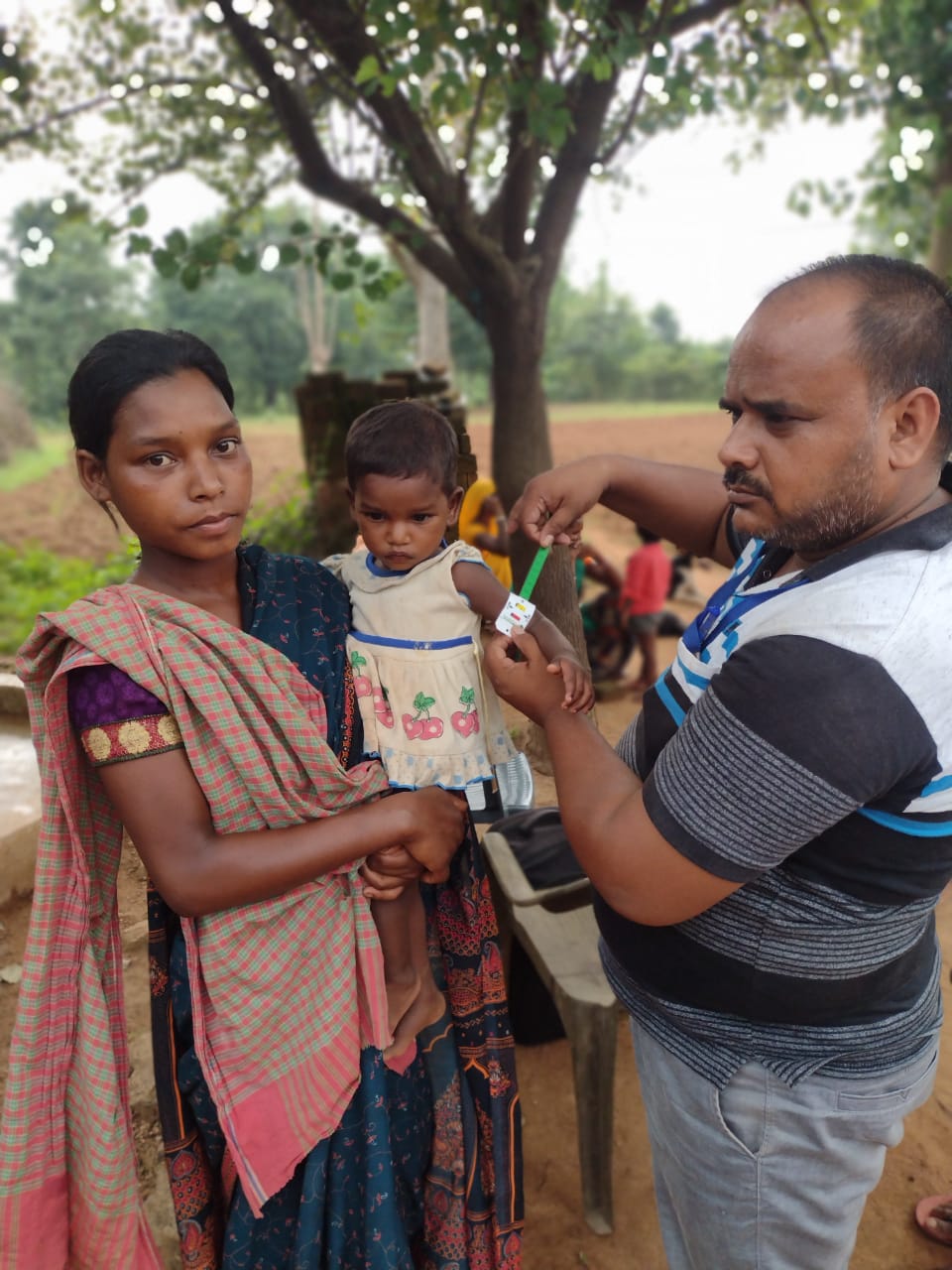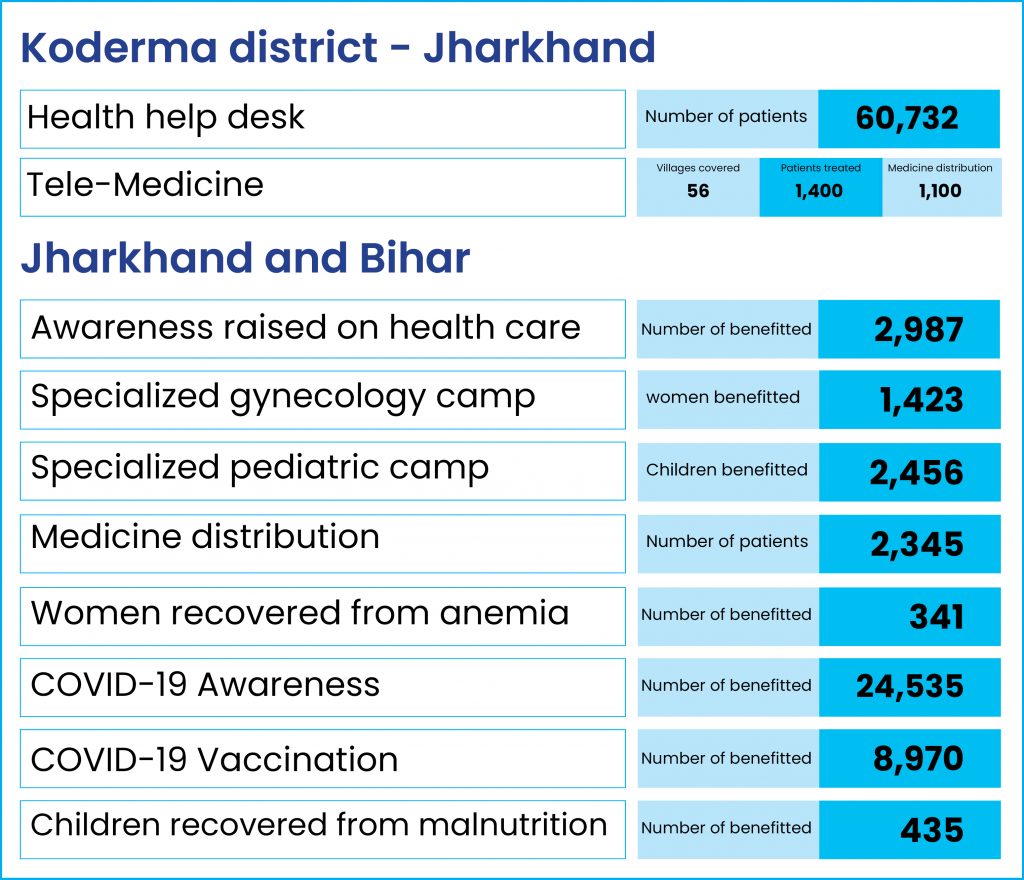Bonfires and winters are the perfect combination until something untoward and unexpected takes place. 12-year-old Khusboo Kumari happened to be a victim of such an unexpected tale, where a freak bonfire accident led to severe burns on her foot.
Of course, the first thing anyone would do is to visit the medical center and have it treated. Yet this is not the first thought that crosses the minds of the folks in rural Jharkhand. Owing to the long travels into the town to visit a good doctor and the high costs, they resort to home remedies. But these remedies aren’t the most advisable and often lead to a more serious issue.

Current Scenario of Healthcare
Access to Healthcare in rural India has always been reported to be very difficult. With a rural population of 88% and 75%, respectively Bihar and Jharkhand’s healthcare system has always struggled to bridge the gap of lack of access to quality healthcare amongst the rural communities.
The high poverty rate (Bihar @ 51.91% and Jharkhand @42.16%) has most of the rural population work in the mica mines of Jharkhand and this is their only form of accessing a decent livelihood that would earn them an income. The health facilities in Bihar are located at quite a distance; some hospitals are at least 30 to 40kms away from rural locations. Hence access to quality healthcare is a challenge.
Making a Change

To tackle the various issues, Hand in Hand India’s Health team has been instrumental and hands-on in implementing numerous health initiatives under an integrated project of promoting education and improving healthcare facilities. This integrated project's overall goal is to reduce child labour and promote child rights; improve access to healthcare and facilitate livelihood activities across 50 villages of Nawada and Koderma districts of Bihar and Jharkhand, respectively.
One of the initiatives being implemented in the states is the Tele-Medicine services. This initiative was launched to ensure that timely care is provided to the rural folks without much ado during the COVID-19 period. The Tele-Medicine staff offer door-to-door services/consultations to the villagers who otherwise do not have any means to access or travel to the local PHCs.

This initiative ensures that timely help is sought either through video consultations or through regular house calls by the doctors/medical professionals. In emergency situations, the patients are referred to the nearby medical centers. It was during one of these regular house visits did the Tele-Medicine staff identify Khusboo and immediately set about getting her the best medical help possible.
Negligent about Healthy Lifestyles
There are also numerous awareness programs organized for the community with the support of community mobilizers, Accredited Social Health Activists (ASHA), and Auxiliary Nurse Midwife(ANM) workers. The two States have many women who are victims of Anaemia as they lack the basic awareness about nutrients and a healthy diet.
Ranju Devi earns a living by working in the mica mines of Jharkhand and the income from this is the only way the family can afford a living. At seven months pregnant and still working, she complained to be facing constant dizziness. The team noticed that her diet was not balanced and the results of the anaemia test revealed that her haemoglobin count was dangerously low, which was a matter of dire concern for her and the baby. Hence to make sure the mother and child are healthy, iron tablets, awareness about proper nutritional foods, as well as fruits, vegetables, and pulses were given to Ranju. To ensure that women like Ranju are receiving the necessary medical care, the team conducts regular camps (General & Gynaecology) in the districts where the health workers identify, educate, and counsel the women and adolescent girls.
The greatest challenge in the two states is the low literacy rate, particularly among the girls. This combined with the lack of awareness about the importance of health and education among women and children is a major concern. Motivating, counselling, and promoting the rural folks to care for themselves and gain knowledge about the various health hazards was in particular, a long task for the team. With counselling and behavioural change communication, women and girls are more aware of health, hygiene, water and sanitation aspects of healthcare.
Caring for the Future Generations
Among the already listed interventions, there are also regular paediatric camps where severely malnourished children are identified and given the proper care necessary. Samridi Kumari, age two was one such severely malnourished child identified by the team. Her mother, sole caretaker and the breadwinner of the family was a mica mines worker but the pandemic and lockdowns snatched away from her only source of income. The lack of income led to the poor nutrition-less diet of little Samridi.
So, when the child was identified her Mid-Upper Arm Circumference (MUAC) was immediately conducted, and was tagged as malnourished. Improving the health of the child was of utmost priority and so the team provided the mother with the necessary nutritional support and food and was also counselled on how to maintain this diet regularly. In cases of anaemia and malnourishment, the families/children are regularly monitories with weekly visits to the house or consultations and all of these services are provided to the beneficiaries free of cost.

Awareness and training on the importance of nutritious food are regularly provided to the mothers and children at schools along with training on maintaining and heeding a child’s physical and mental health.
This is only the beginning…
We at Hand in Hand India have been striving to improve and better this very condition of rural Bihar and Jharkhand. We started out interventions two years ago during the 1st COVID-19 lockdown and it certainly has been a challenging, difficult, and nerve-racking journey thus far but it also has been fruitful, impactful, emotional, educational, and an eye-opener to many. All of our interventions are currently ongoing we proudly present the impact we have created in these neglected regions.







